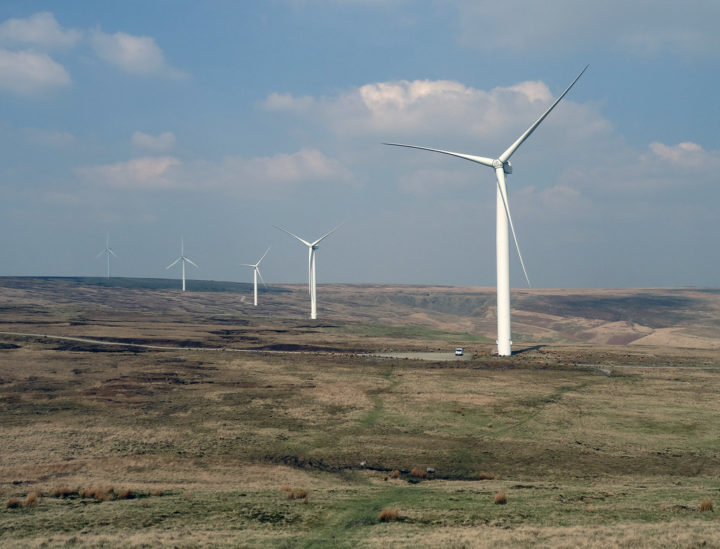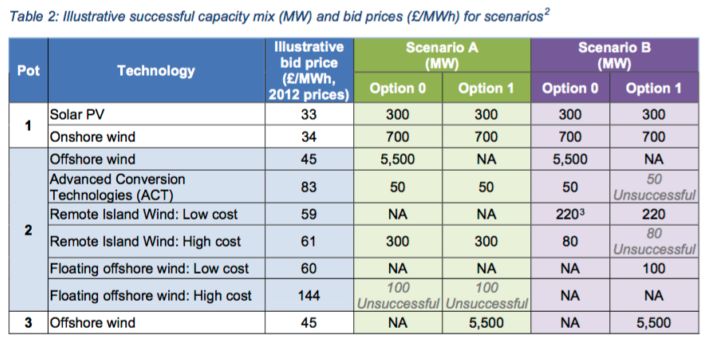Onshore wind: back with a bang?
This week's big energy announcement is good news for energy bills and for the climate
By Jonny Marshall
Share
Last updated:
News this week that the Government is going to hold auctions for onshore wind and solar has reversed a five-year stand-off between politicians and industry.
As it stands, the proposed measures go some way towards closing the gap on the UK’s carbon budgets as well as ensuring local communities have the final say over developments in their area, ensuring that projects are not forced upon rural people.
And while the years of back-and-forth over the future of these cheap and clean energy sources has generated reams of evidence that supports the reinstatement of CfD auctions, the consultation released by Government finally hints at the detail of what could be involved.
Cheaper than ever

Proponents of renewables have long-claimed that both onshore wind and solar are the cheapest ways of adding generating capacity to Britain’s electricity network, replacing old and dirty kit with the most modern turbines and panels.
And while number crunching by both industry and onlookers has shown the savings on offer, there are now some numbers from Government to outline these savings.
Released alongside the consultation, the policy impact assessment contains a number of indicative prices for different ways of generating electricity – the first time the Government has let on to how much it thinks it will cost since 2016.
With indicative bids in the proposed 2021 auction coming in at just £33/MWh and £34/MWh for solar and onshore wind, respectively, it is now crystal clear that renewables cannot be beaten on cost.

Increasing these values to account for inflation (as they are presented by BEIS in 2012 prices) gives £39.25 and £40.50 – comfortably below current wholesale market prices and under predictions for prices in the future, they therefore represent a payback to consumers, rather than a subsidy.
Ramping up
The consultation also states that auctions for established technologies (onshore wind and solar) will be held alongside those that have underpinned the UK’s offshore wind revolution. This is essential if renewable build is to be commensurate with the rate needed to meet national carbon targets.
However, some questions remain. Previous auctions have been mainly limited by spending – contracts representing a certain amount of subsidy are offered, with the auction closing when the pot of cash has run out.
Now the cost of these technologies are so cheap, this will no longer hold, with the only other option to limit according to a capacity cap. While this will allow observers to easily keep tabs on the rate of expansion of clean generating capacity, it also represents a greater degree of control over the electricity market, with the Government effectively controlling the make-up of the generation mix.
Plans to hold auctions every other year, as outlined in the offshore wind sector deal, may need to be revisited, potentially to annual auctions to light the fire under the industry and deliver multiple GW of renewables each year, pushing down bills at the same time as meeting climate targets.
For offshore wind, Aurora Energy Research suggest that 4 GW/year will be needed. Achieving the CCC’s recommended level of 30 GW of onshore wind by 2030 would require similar ambition.
Forward looking
The consultation also proposes other changes to policy to drive forward a low carbon Britain. Giving floating offshore wind – a technology with a vast global market – more chance of picking up contracts by moving offshore wind to a separate pot will help underpin a technology that can be used in seas and oceans around the world, rather than just shallow waters such as those surrounding the British Isles.
Calling time on coal-to-biomass conversions will also ensure that the controversial technology – in unabated form, at least – is not supported beyond 2027. This should allow more space for rigorous analysis of the lifecycle emissions of biomass as a fuel before the anticipated consultation on greenhouse gas removal technologies (in which BECCS is expected to feature) lands soon.
All-in-all, this step is positive news for the UK. Re-opening market access for the cheapest, cleanest and most popular ways of generating electricity will help clean up the power system that will underpin decarbonisation efforts in the UK.
Achieving respective targets of 30 GW onshore wind and 40 GW offshore could see around 300 TWh of electricity generated from British wind farms in 2030 and beyond, or more than 90% of total power generation in 2019.
Alongside other clean electricity sources, wind is now clearly poised to be the backbone of the UK's future energy system.
Share